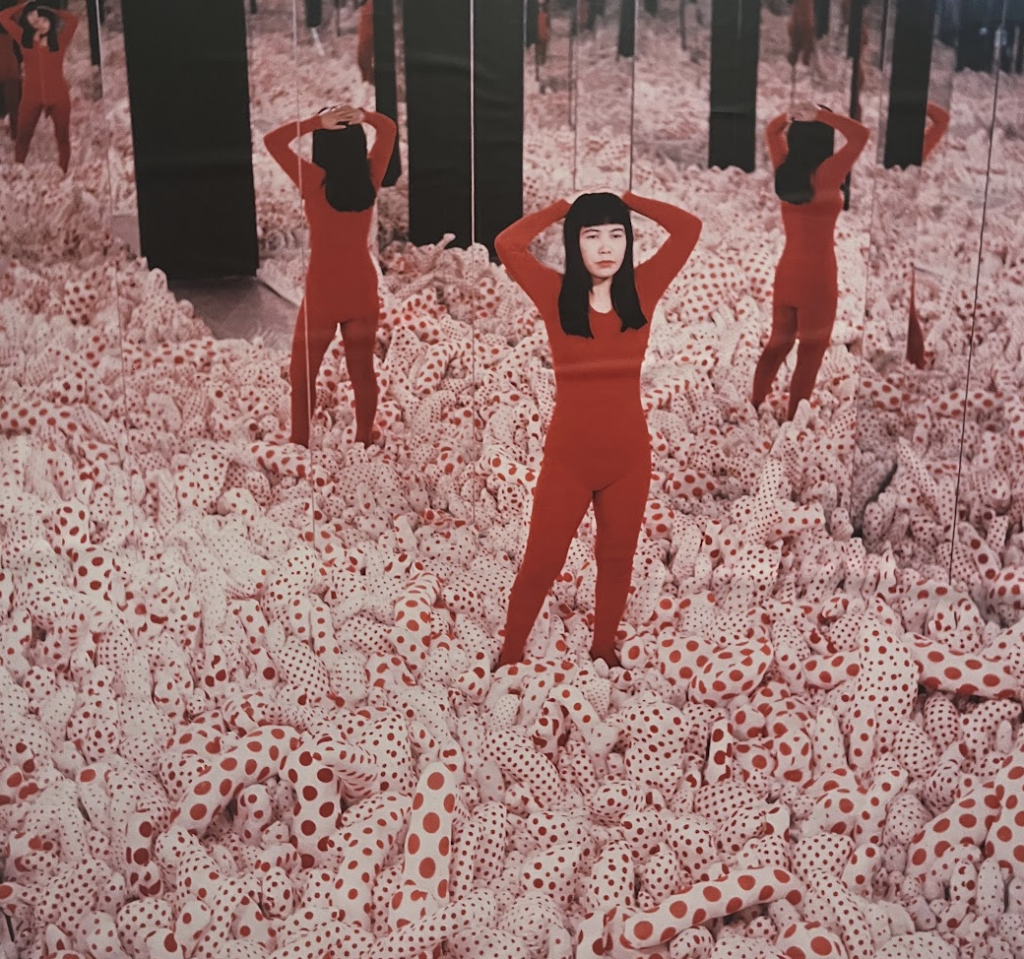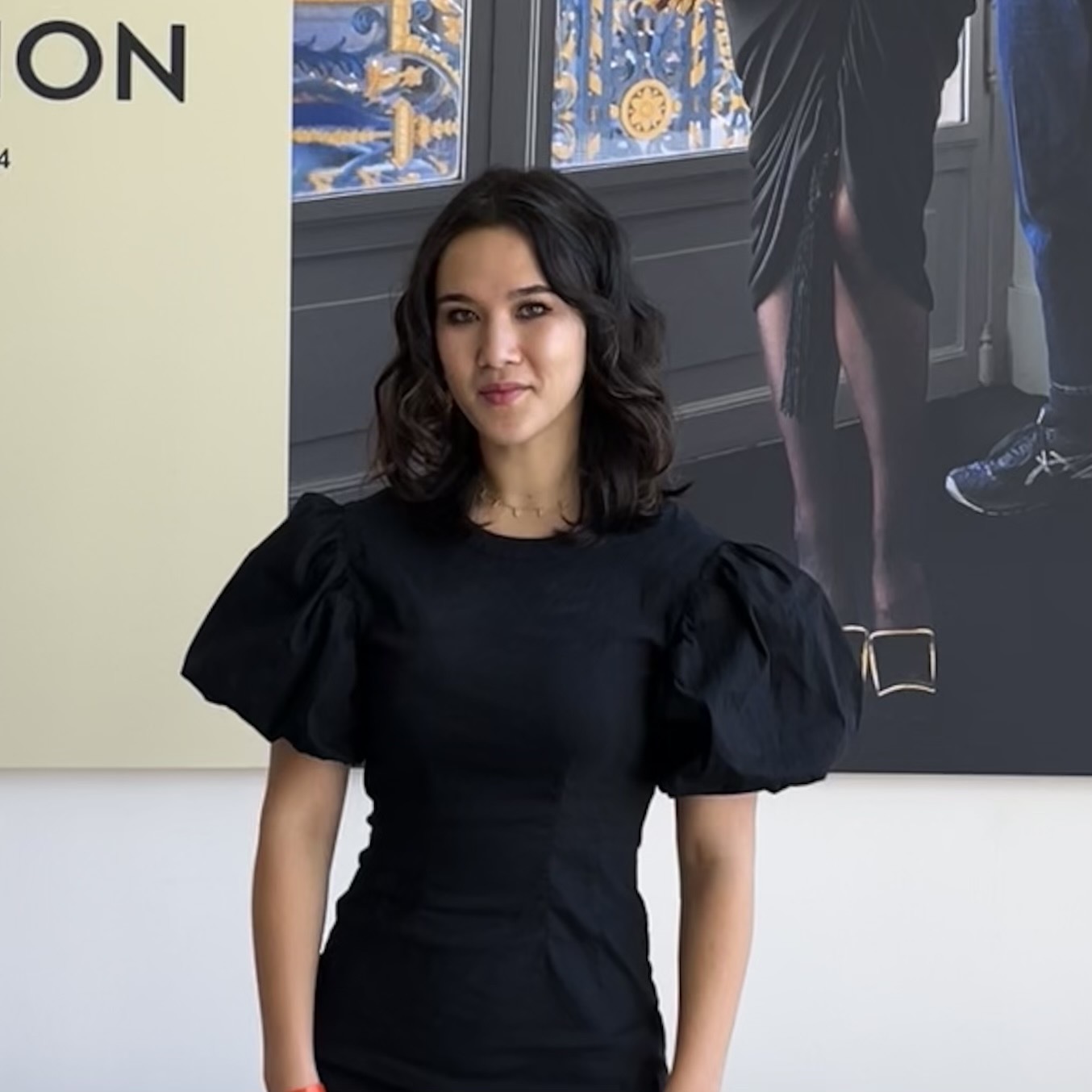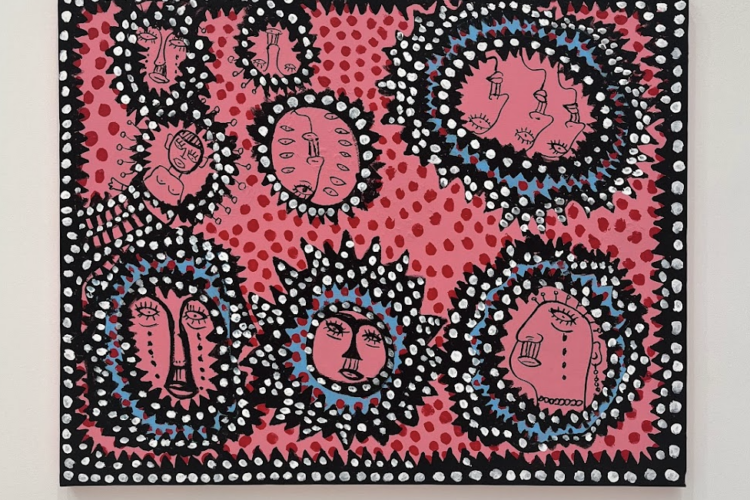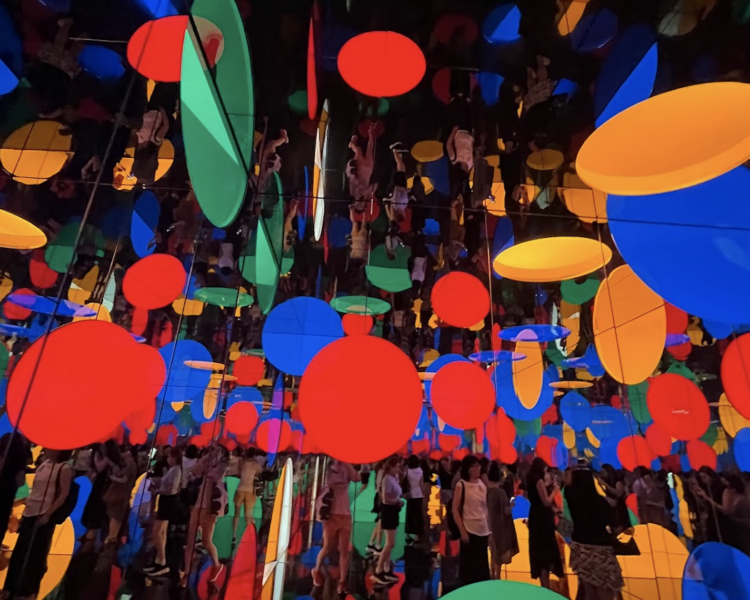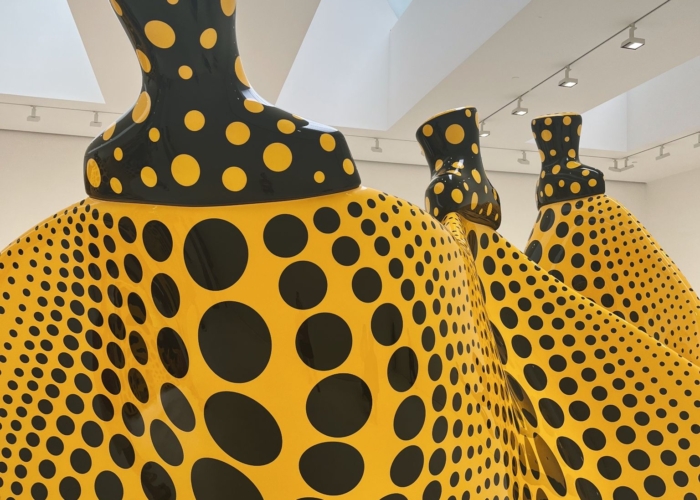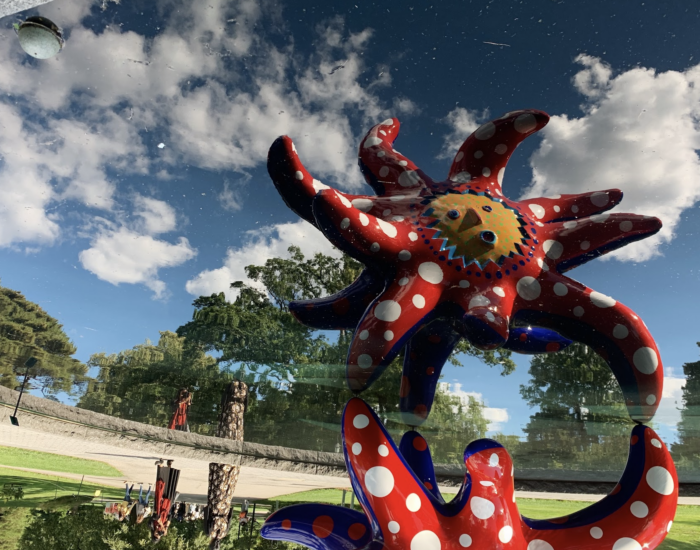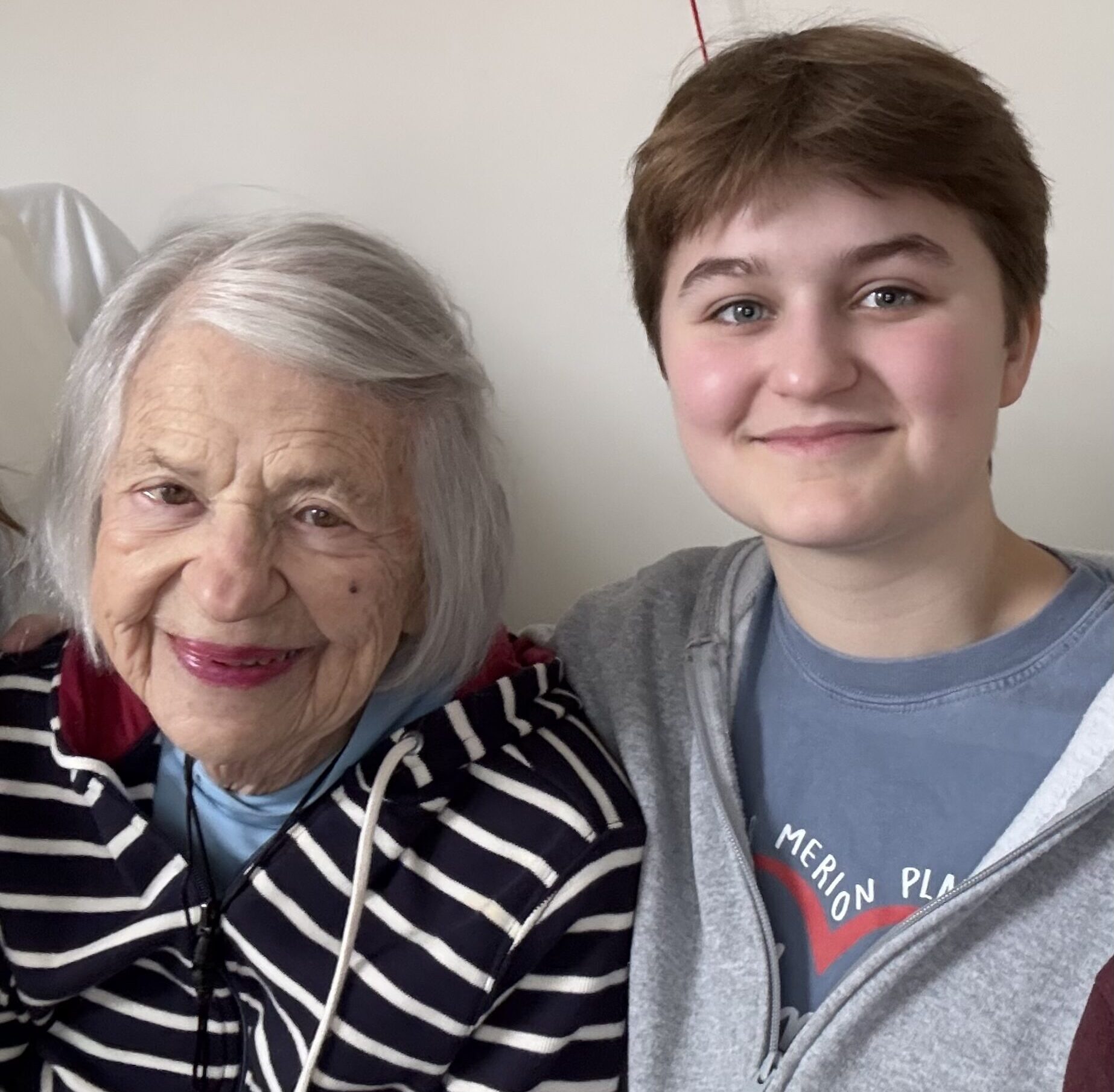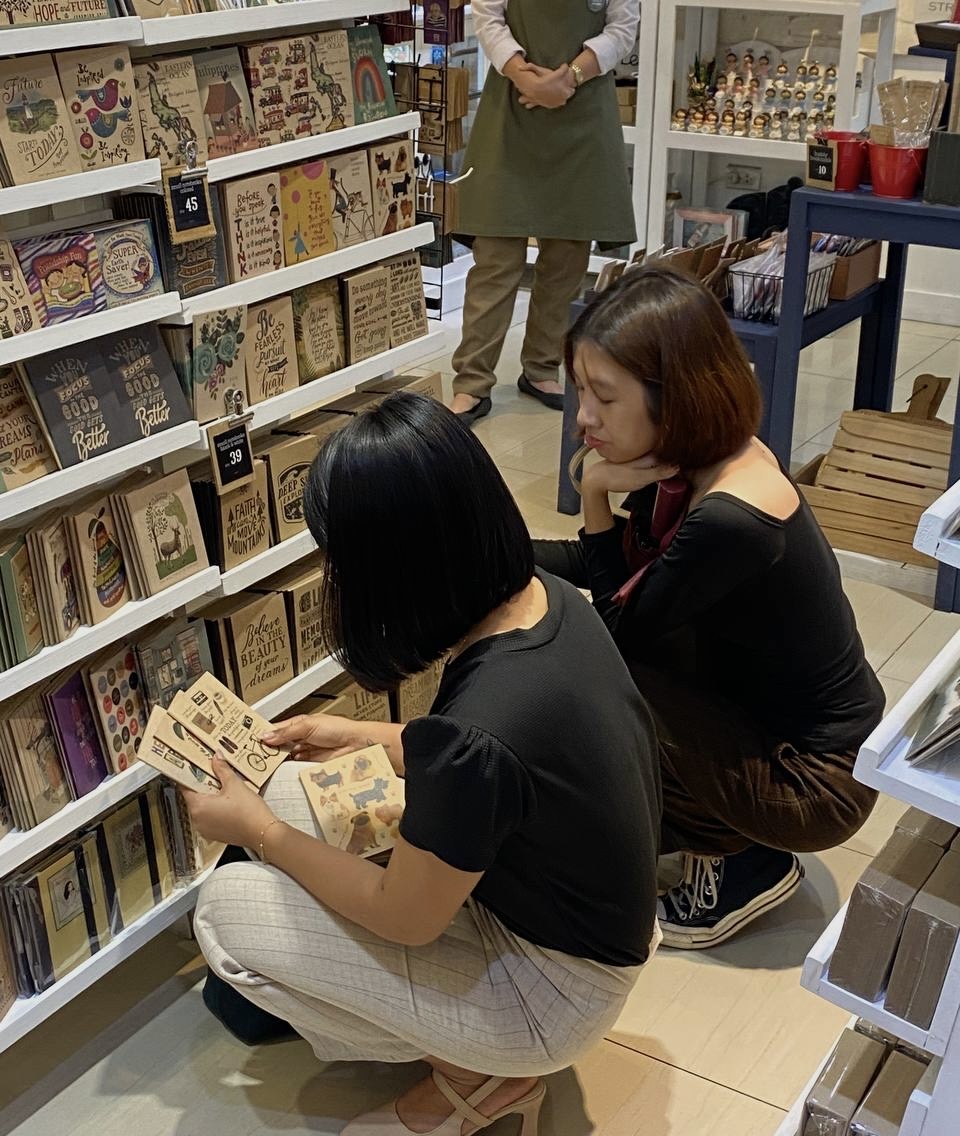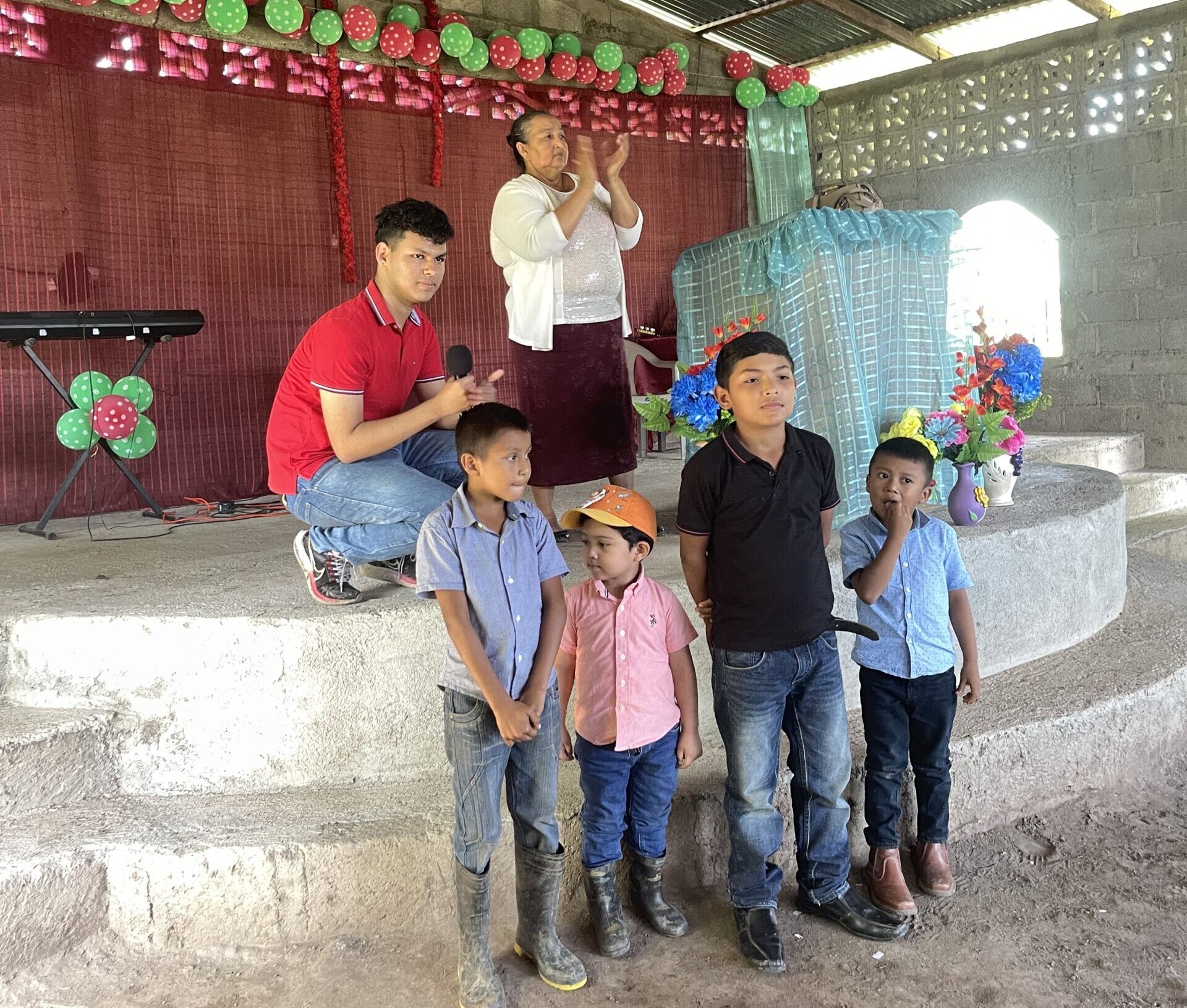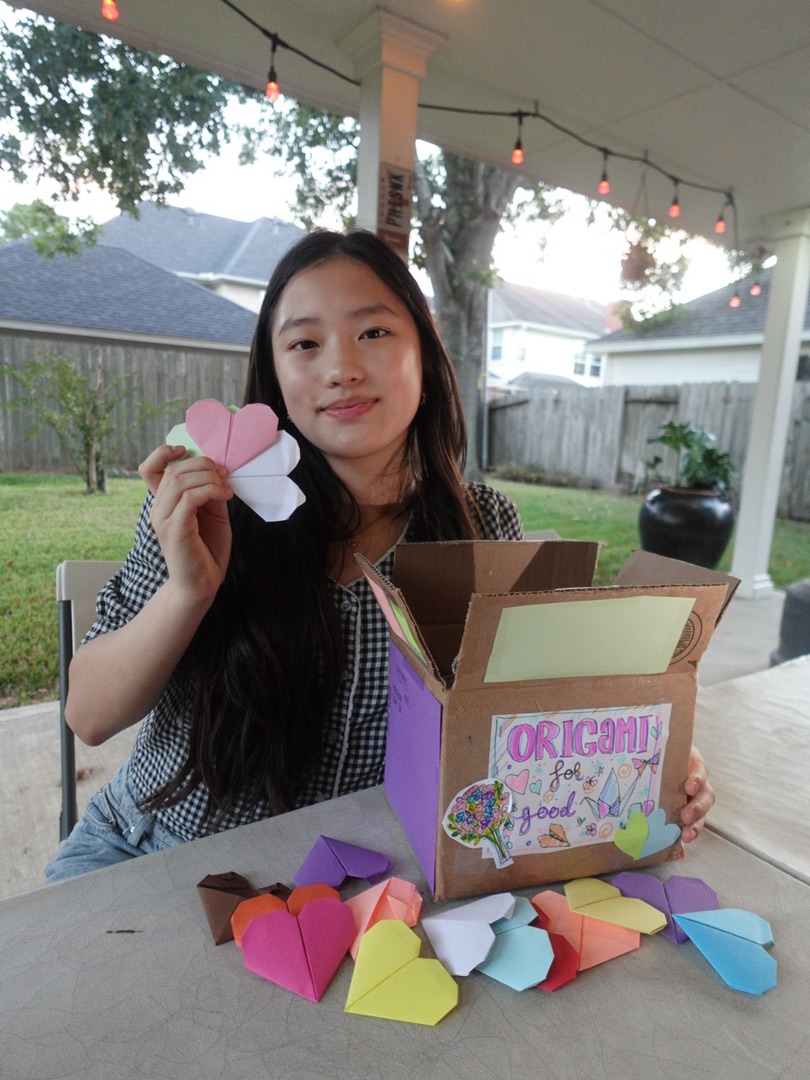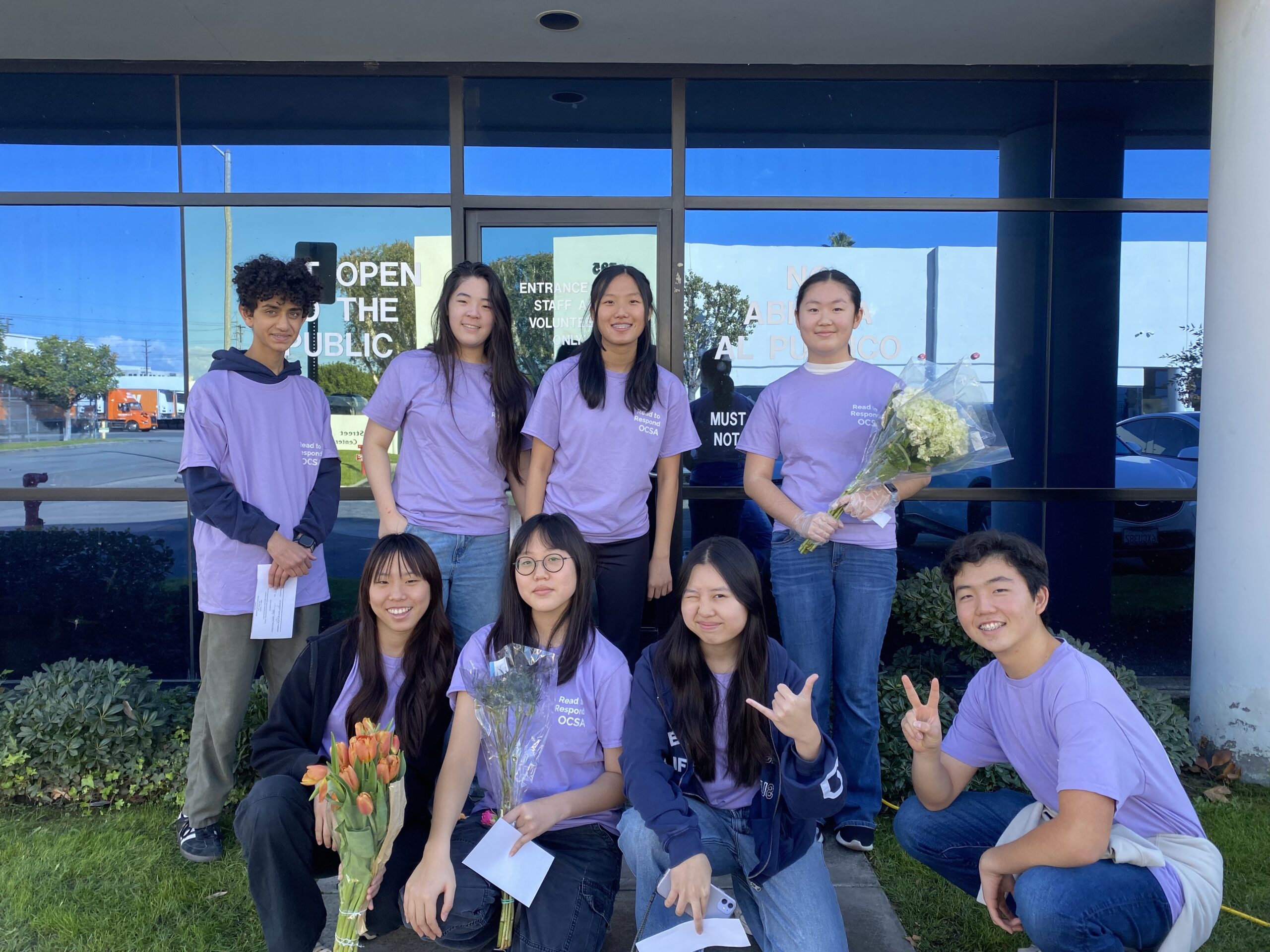“One polka dot: a single particle among billions,” Yayoi Kusama reflects on her signature motif. “I wanted to examine the single dot that was my own life. One polka dot: a single particle among billions.” Like the Infinity Room, polka dots are a distinct staple of the artist’s work. From meticulously painted pastel polka dots reverberating across a canvas to a psychedelic dotted pumpkin floating on the island pier of Naoshima, polka dots are pervasive throughout Kusama’s career in almost all her installations and works. But like infinity nets and rooms, they evoke the artist’s lasting battle with mental illness and the reprieve she finds only through her work.
Kusama’s exploration of polka dots began as a child, when she would spend many of her waking hours staring at the seemingly infinite number of white pebbles by the riverbed near her home. The repetition of shape and form became a coping mechanism as she began to suffer from hallucinations – the repetition of the dots helped Kusama achieve what she calls “self–obliteration,” a method of detaching from her anxieties. She created acrylic on canvas pieces in color palettes ranging from pastels and fluorescents to primary colors juxtaposed against a stark black canvas. This style of painting continued throughout her career, even up until today. For instance, her solo exhibit “I Spend Every Day Embracing Flowers” at the David Zwirner Gallery this past summer featured a wide range of textures, patterns, and memories conveyed through layers of polka dots.
Like the infinity nets – which translated three–dimensionally into infinity rooms –, her polka dots also took on three–dimensional media and intersectional art forms. Mirrored reflective polka dots and acrylic panels became a primary tactic Kusama used to construct her infinity rooms.
One of her earlier sculpture installations, “Narcissus Garden” (1966), similarly marries form and reflection in a similar way. Instead of two-dimensional mirrored circles, three-dimensional stainless steel spheres engage viewers and prompt self–reflection. The installation now lives at the Crystal Bridges Museum, where it floats on a pond in the sculpture garden and constantly travels in different directions.
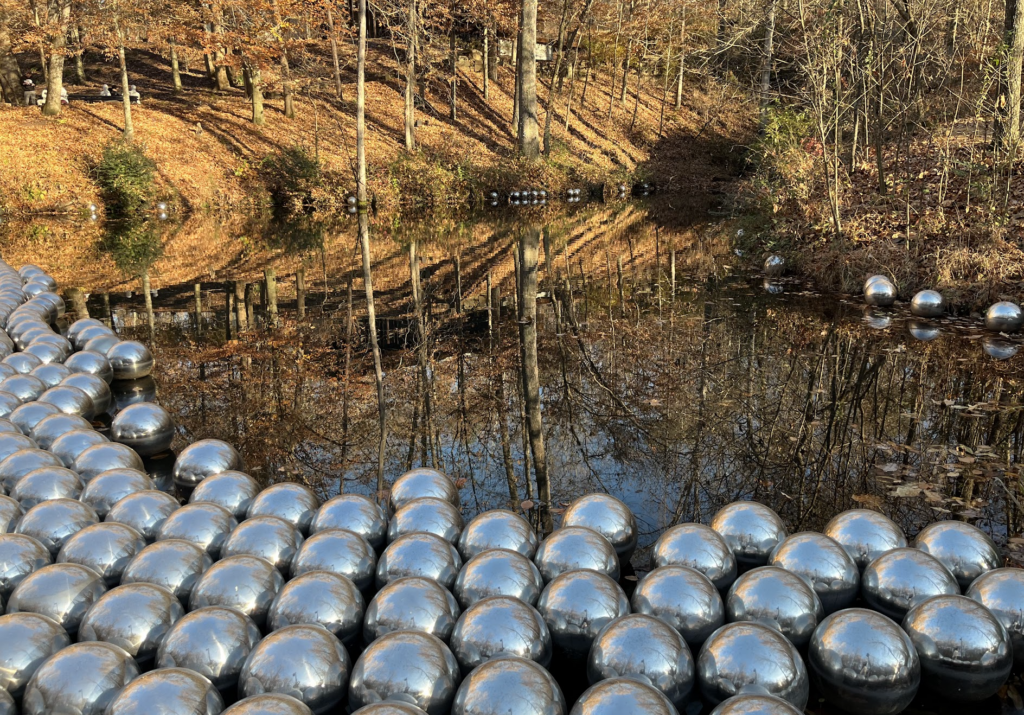
Kusama’s sculpture installations – the most widely-recognized being pumpkins and flowers – are also clad in polka dots. Her signature yellow pumpkin on the pier of the Benesse Art Site in Naoshima has also inspired numerous recent works, such as her bronze installation “Aspiring to Pumpkin’s Love, the Love in My Heart” (2023) at the David Zwirner and “Dancing Pumpkin” from Kusama’s solo exhibition at the New York Botanical Garden, “Kusama: Cosmic Nature.” (2020)
Kusama also incorporated her signature polka dots into the surface design of her flower sculptures, another motif inspired by her profound connection to nature. One of Kusama’s most pervasive art forms, these flower sculptures are all over the world to this day, from “I Want to Fly the Universe” (2020) and “I Spend Each Day Embracing Flowers” (2023) to the ongoing series “Flowers that Bloom Now.” (2009 – today)
Additionally, Kusama integrated painted polka dots into her political statements and interactive works; for instance, in the late 1960s, as Kusama became a leading – and one of the only female – voice in the pop-art scene in New York, she participated in and orchestrated anti-tax and anti-Vietnam war protests with models and actors clad in her polka dots.
